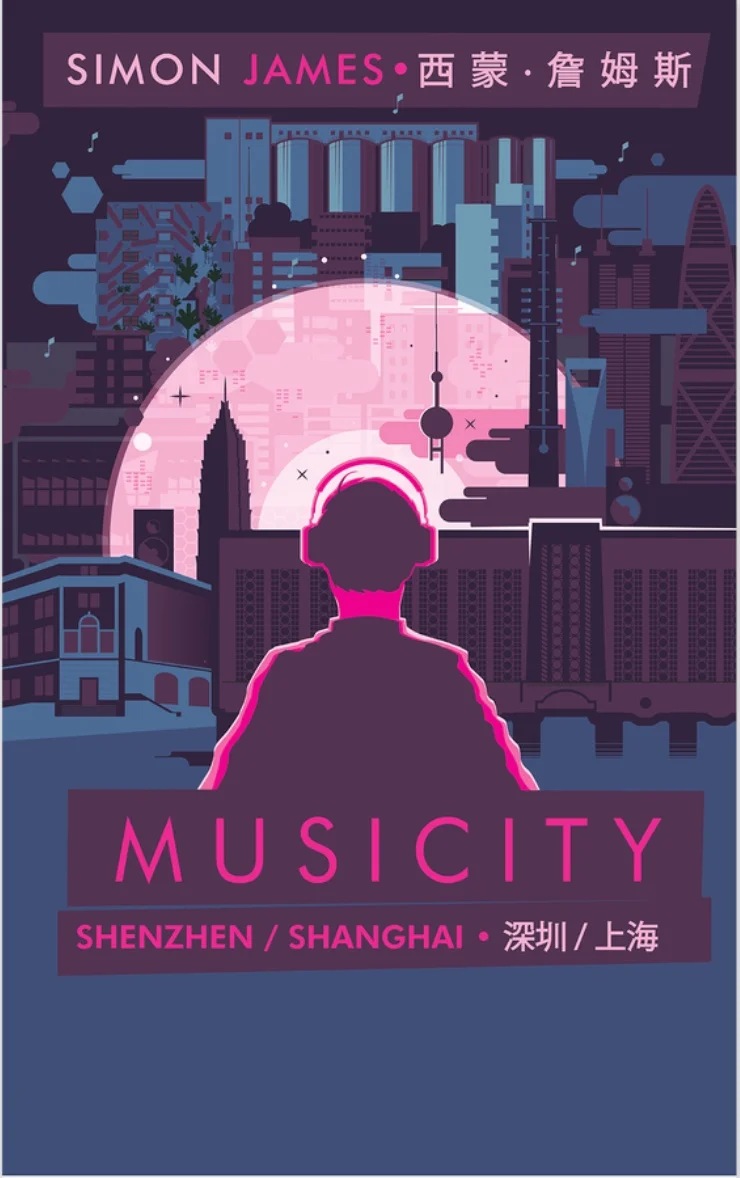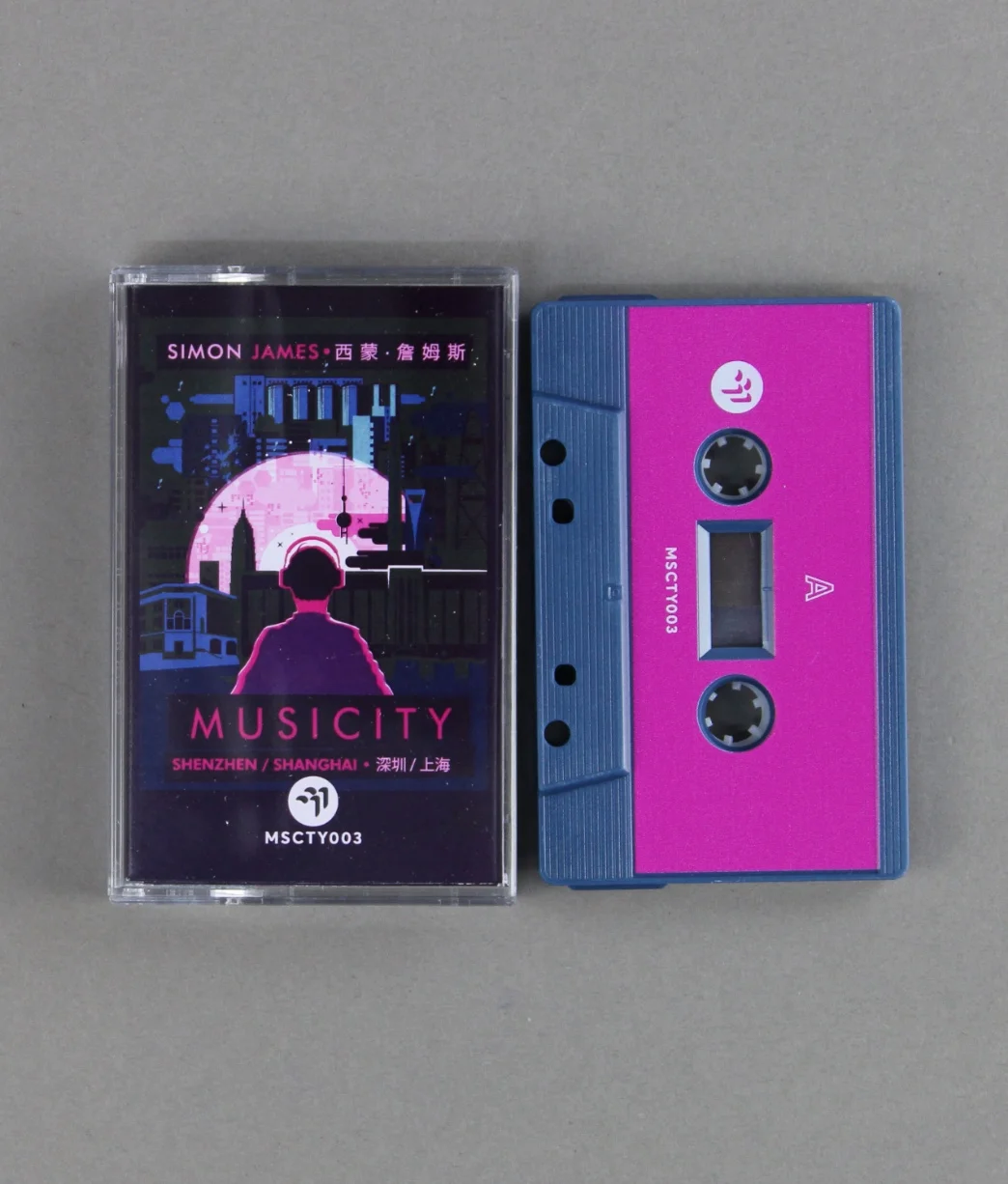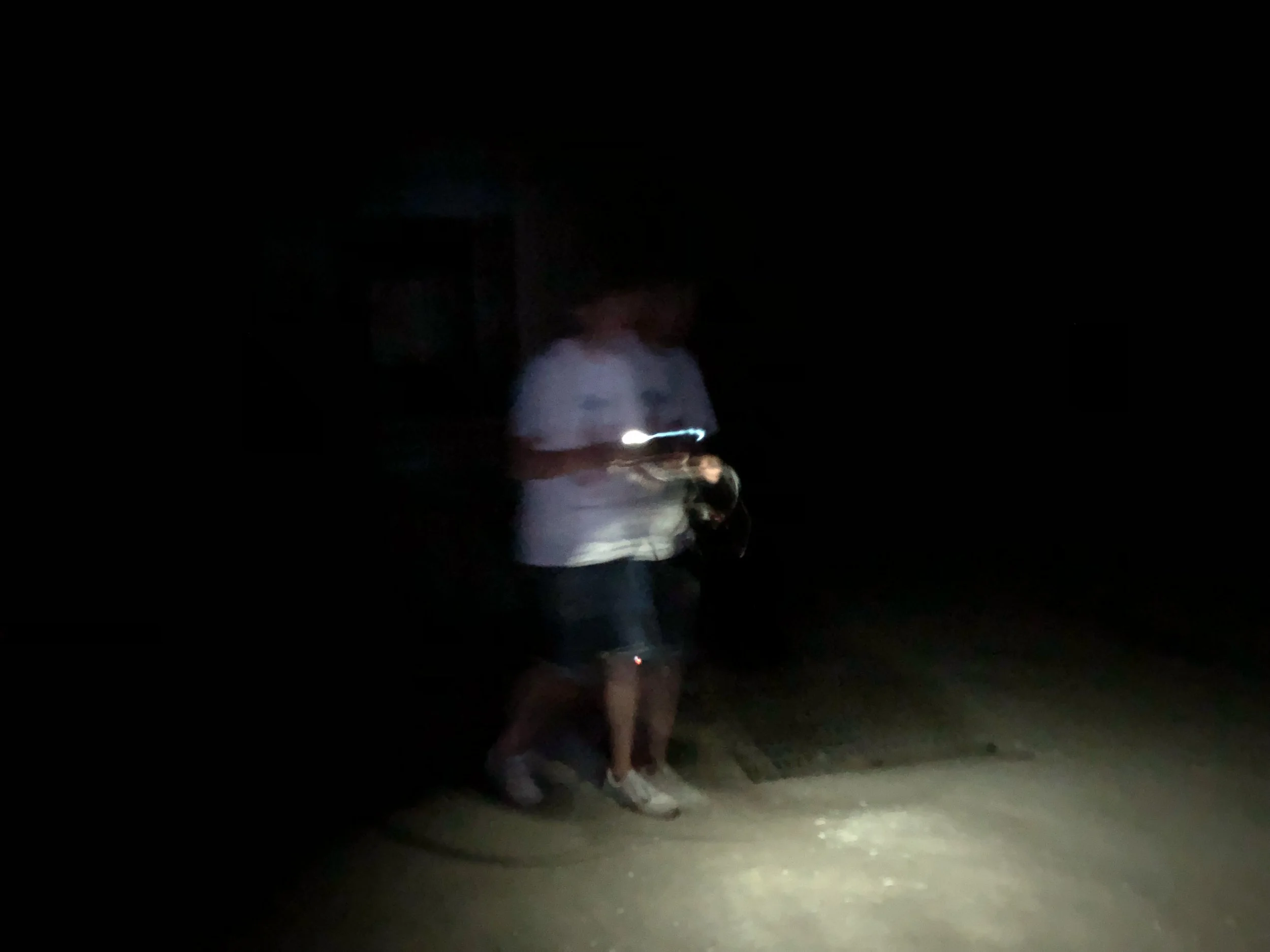My adventures in China this year with Nick Luscombe’s Musicity project supported by the British Council, have been some of the most rewarding of my career and I’m very proud to announce this cassette release - Musicity 003 Shenzhen/Shanghai. Two sides of field recordings and architecture inspired compositions. Available now exclusively from Bleep.com
image courtesy of Bleep.com
Full release notes are below for those interested in the background to the recordings and compositions.
image courtesy of Bleep.com
Huge cavernous silos...
a cacophony of horns...
maze-like patterns and sequences that circle and loop...
peace broken by invisible electricity...
Shenzhen
The hidden sound world in the Chinese cities of Shenzen and Shanghai captured and explored through field recordings using traditional, contact and electromagnetic microphones, then absorbed into and interpreted through Buchla synthesiser compositions.
Shenzen – just a stone’s throw across the bay from Hong Kong – is one of China’s youngest and fastest-growing cities. Established as a Special Economic Zone (SEZ) in 1980, with accompanying tax benefits and easier global trading, it went from sleepy fishing village to vibrant metropolis and world-leading technology hub in 38 years.
We head first to a former glass factory created in the SEZ infancy as a collaboration between China, the USA and Thailand, originally called Shenzen Southern Float Glass Company. Now renamed I Factory, it is used as a venue for conferences, art shows, photo-shoots and performances.
Photo by Dickson Dee
Four huge cavernous silos that once held the chemicals needed to make glass now hold nothing but reverb and dust. I replaced those long-gone chemicals with electronic sounds created on the Buchla 200e Electric Music Box. These sounds were introduced into the silo spaces via impulse response reverb, then mixed with extensive field recordings made in those same silos using both traditional and contact microphones – picking up sound waves moving through the air, and vibrations in the solid structure.
Next we hear the sounds of what’s left of the original fishing village. Shekou harbour houses a daily fish market, but its days are numbered as the unrelenting force of development threatens its existence.
Baishizhou urban village – known as “handshake city” due to the incredible closeness of some of its buildings – is also due for demolition and redevelopment: another unique urban soundscape about to be wiped out. I spent my first evening in Shenzen here, wandering around the bewildering maze of alleyways and busy streets teeming with electric scooters accompanied by a cacophony of horns. The “Square Dance” ladies – the name given to retirees who meet in town squares every evening to dance in groups - were in full swing and lo-fi recorded messages advertising fruit and vegetables blasted from multiple speakers on market stalls.
Photo by DIckson Dee
Huaqiangbei Electronic Markets is an area of giant shopping malls full of electronic gadgets, circuits and components. The sound of packing tape is a constant as components are prepared for shipping to the customers who flock here from all over the world. Instead of traditional microphones I chose to capture this space using an electromagnetic microphone which picks up frequencies that surround us in a hidden sound world. These are even more pronounced in the environment of the electronic markets.
All the sounds here are untreated.
A full album focusing on this material is planned for 2019.
We end our sonic exploration of Shenzen at OCT Loft, an ex-factory compound that used to be the home of KONKA, a Chinese manufacturer of electronics products. The factories, warehouses and residential areas have now been taken over by artists, and creative industry flourishes here amongst the utilitarian buildings, leafy pathways and roads, where I kept getting lost in a dreamy haze of jet lag and oppressive heat. But somehow I found calm here. The track OCT Meditation represents a turning point for me: from those anxious “can I do this?” thoughts – which are a low background hum to my daily existence, sometimes seeing me unable to board a train to London – to the realisation that not only am I doing it, but I’m loving every minute of it.
The possibilities that stretched out from this moment were mind-blowing.
Photo by Dickson Dee
I acknowledge some self-indulgence here, but also the fact that spaces and architecture don’t exist in a vacuum. They are full of life and experiences, sounds that can’t be controlled, often unwelcome intruders, sometime unexpected surprises – so my experience in this place was something I wanted to include.
On now to Shanghai, once a modest trading port and now an unparalleled economic powerhouse of 24 million people. Like most Chinese cities, it is a blend of ancient and modern, with old European banking buildings on one side of the waterfront area known as the Bund, looking across to the cutting-edge architecture of the modern financial centres. Modernisation is key here – with many humbler districts being demolished to make way for developments designed to consolidate the city’s global influence.
A tiny microphone attached to a massive cable reel travels across the floor of a huge hangar at West Bund Aircraft Factory, now being transformed into a cultural hub on the banks of the Huangpu River.
Next – 1933 – a brutal concrete structure that actually predated Brutalism, designed to expedite the slaughter of animals. The confusing, visually stunning, maze of grey concrete passages, ramps, stairs and bridges ensured the cattle could move only one way – to their inevitable death.
Our visit here begins with an unofficial guided tour around the building as I get my bearings.




The first thing I noticed when I arrived are the patterns. The front of the building has 19 rows of 12 circular windows running the entire width of the structure - these were originally vents to keep air flowing throughout the slaughterhouse. Looking like a giant step sequencer, they provided a starting point for my composition Old Milfun, the building’s original name.
I also referred to a document that revealed the Feng Shui of the building. It claims that the number of windows, ramps, stairways and the shapes of the pillars were not arbitrary or dictated by structural concerns, but instead were designed to protect the outside world from the negative energies being unleashed inside. Even the location and building’s orientation were considered with Shanghai’s human residents’ spiritual safety in mind.
This folklore, combined with the structure, led to a composition that – just like the building itself – is full of maze-like patterns and sequences that circle and loop around again and again. I wanted to create a composition that was easy to get lost in, where you never quite know where you are – just like 1933, where I got lost many times.
We leave 1933 at midnight with my local guide Tian playing Chinese bells that I’d found in the city earlier that day.
The spaciousness of the sound in this next location – Nanshi Power Plant - captivated me and I ended up recording for over 45 minutes. There was definitely a meditative process going on – maybe an antidote to the intensity of sounds captured during the rest of the trip?
This towering building supplied the first electric light to Chinese people in 1897 and had a temporary stint as Pavilion of Future during the 2010 Shanghai World Expo. It is now known as the Power Station of Art, a 42,000 square metre museum and gallery.
I was lucky to get a tour when the space was closed to the public, which offered a unique recording opportunity. I sat in the midst of Christian Boltanski’s “Storage Memory” exhibition, recording the space. At first there is just the whine of power in the background, while occasional voices of staff come and go. Later, a mechanism on the ceiling starts up, slowly moving photographic portraits printed on thin cloth around the huge hall. The squeaks and rattles reverberate around the space beautifully and sounds from another installation drift through the corridors.
The peace of this space is soon broken by an electronic approximation of electricity which crossfades to an electromagnetic recording of Shanghai’s maglev train to Shanghai Airport.









